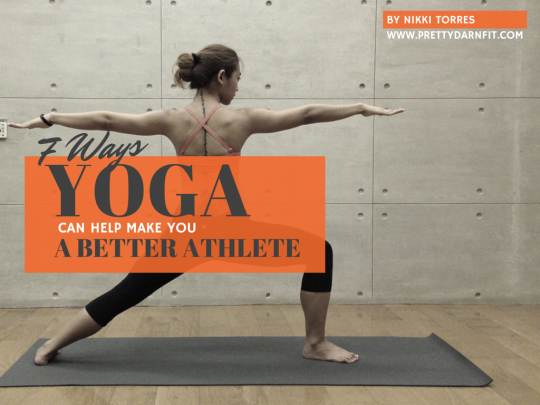
Many see yoga as a gentle form of exercise that focuses mainly on stretches and breathing practices. While this does apply to some styles, many other types of yoga bring more benefit to the body than just flexibility and a relaxed mind.
A dynamic Vinyasa Flow class or a strong and sweaty Power Yoga class could do just as much as your regular strength and conditioning exercise. I’d like to believe every person could benefit from both the postures and the breathing exercises in one way or another—athletes included.
Whether you train to race as an individual or to win a championship with your team, below are 7 ways this age-old practice could make you better at what you do:
1. HELPS YOU DEVELOP BALANCE AND COORDINATION.
There are countless poses in yoga that require you to shift your weight onto just one leg, onto your arms or maybe even your head. These teach different muscle groups to work together, bringing a sense of awareness to your body and making it easier to hold the poses as you progress. A developed sense of balance and muscle coordination is perfect for almost all kinds of physical activity and sports such as surfing and golf. Into endurance sports? Coordination helps keep you from tripping or falling and prevents injuries when the body starts to move in full speed.
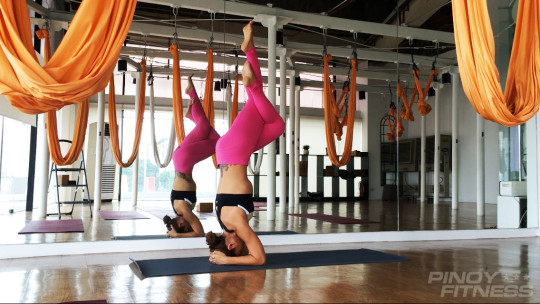
2. INCREASES MOBILITY.
If you train regularly, you probably feel the muscles and the tissues connecting your joints tighten constantly. Muscle contraction or flexion must be countered by stretches to allow some space to “breathe”. When muscles become too tight, you become prone to burnout, fatigue or injury. The stretch you get from a consistent yoga practice loosens up the tightness in the muscles around your joints allowing them to move more freely and with greater range.
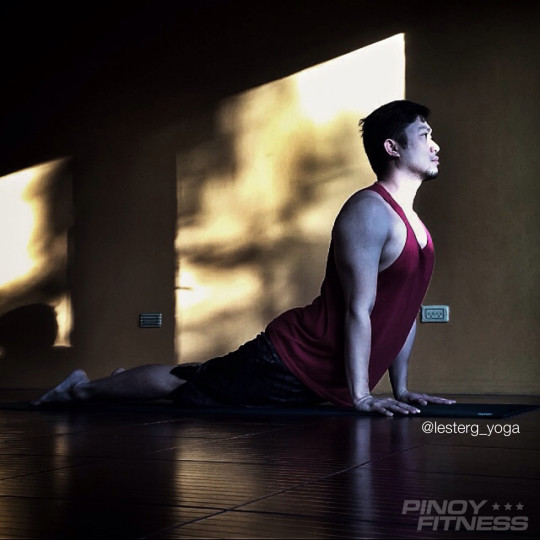
3. BUILDS MUSCULAR STRENGTH.
If you think yoga is all about easy stretching poses, you probably haven’t held a Warrior pose. Holding asanas (the Sanskrit term for poses) for a minimum of three long breaths requires major muscular effort. Many styles of yoga involve carrying your own weight, making it a good alternative to strength training or your usual body weight exercise. Standing poses are great for building strength in the legs and pelvis while arm balances and inversions work great for upper body strength. As you get stronger, the more challenging poses become more accessible to you.
4. IMPROVES ENDURANCE.
Coming into a yoga pose and holding it for a period of time can become really challenging. Imagine doing the same thing in a series of poses that require proper form and alignment. Flowing through 60-minute sequence not only gets the body fired up but it also gets the heart racing depending on the flow’s pace. Learning to move from one pose to another with consciousness and awareness not only develops strength but endurance.
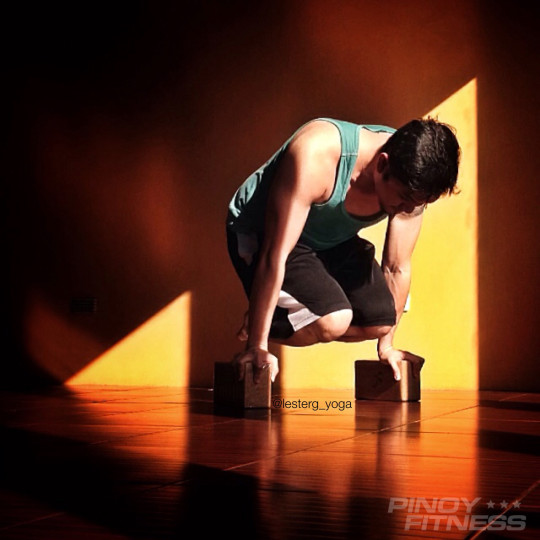
5. BETTER BREATHING.
Pranayama or breathing techniques not only improves your regular breathing patterns, it also increases lung capacity. A recent study from the Khon Kaen University in Thailand revealed that yoga practice increases chest wall expansion or the lungs’ capacity to take in air. This makes breathing much easier and we all know that when you’re not short of breath, you can easily go faster, harder and further.
6. FOCUS AND CONCENTRATION.
The practice establishes a connection between the mind and the body. A regular yoga practice helps you become aware of how your own body feels and works. As you move through a sequence of poses, the physical body remains challenged but the mind gradually slows down and comes into a more relaxed state—a state of focus and concentration. When you’re often centered or “blissed out”, you gain control over the activities of your own mind making it easier to pay close attention to one thing and achieve specific goals.
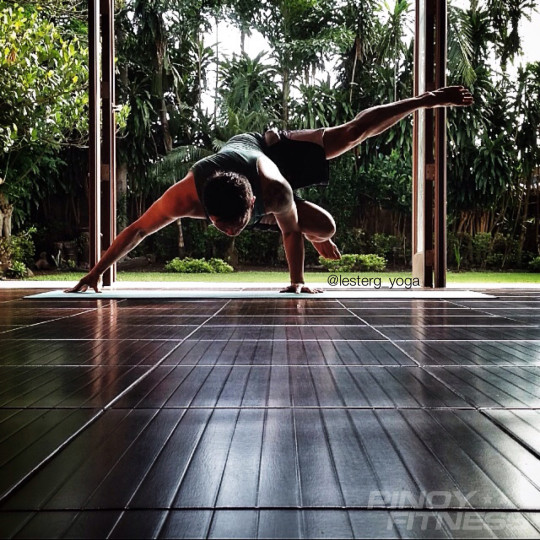
7. AIDS IN RECOVERY.
Gentler forms of yoga such as Restorative Yoga allows tired and overused muscles to relax and facilitate healing. Even if you like to go on #beastmode 99% of the time, the truth is all that effort you put into training and working out will all go to waste if you do not prioritize recovery. Restorative Yoga, Yin Yoga and several other passive styles focus on relying on props such as blocks, blankets, bolsters and straps and your body’s own weight to hold a pose. In short, you are left with no choice but to rest because the muscles are forced NOT to work. These types of practice often leave you feeling recharged and, believe it or not, stronger during your next sweat sesh.
I’ve heard “I can’t do yoga. I’m not flexible!” too many times. If flexibility is something you lack, the more you should start practicing yoga. Just keep in mind that like any other activity, the goal of practicing is not to be instantly good at it but to build both flexibility and strength from whatever level you are currently at.
Reference: www.ideafit.com
Photos by Lester Guevara and Nikki Torres







Marie Ayo :)
Ma’am Wagy Batrina Batistil :)
Candz Tud-quez oh lakas kya pala
Kaya tara Thony join ka na,c neil nagyo yoga din dun sa gym nla
Yoga strengthen one’s core and stretches those muscles on our legs and feet that are often neglected when working out. It not only improves one’ s running speed but helps you enjoy your first trail run or mountain climb.